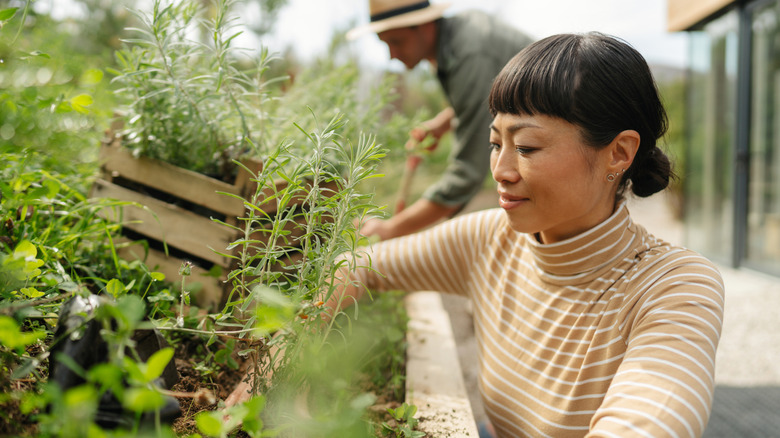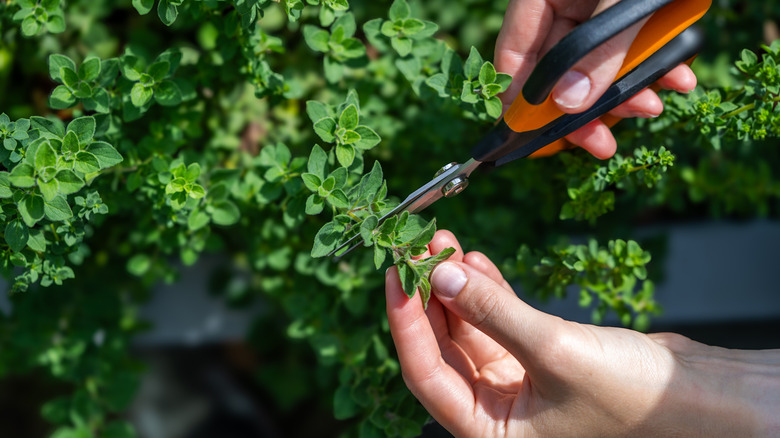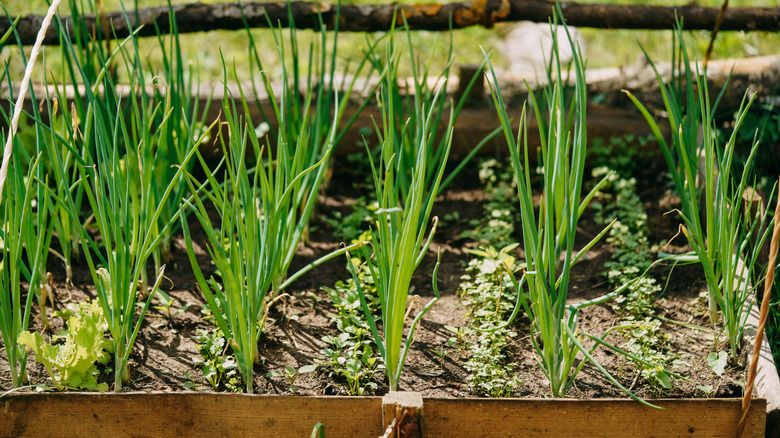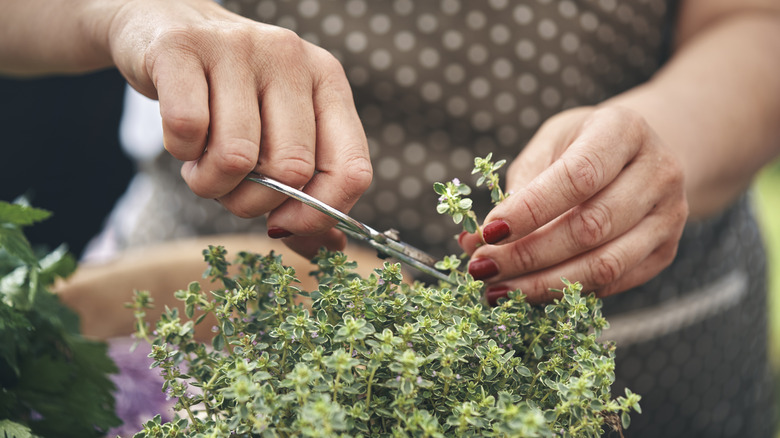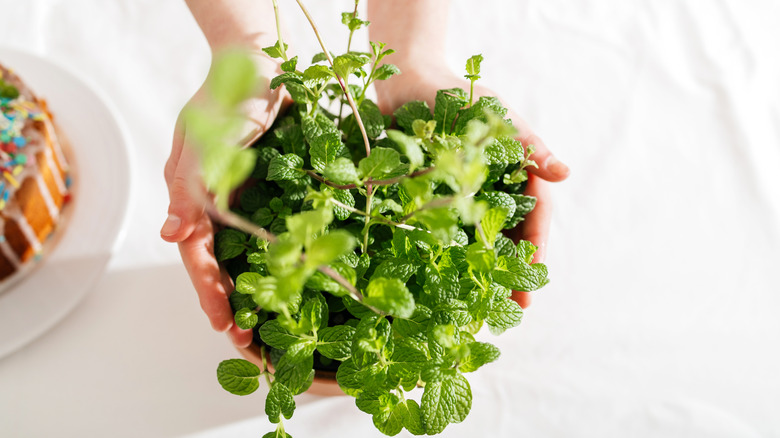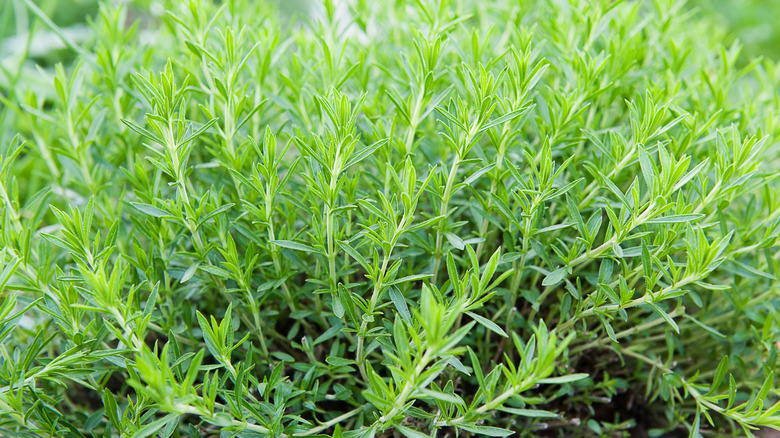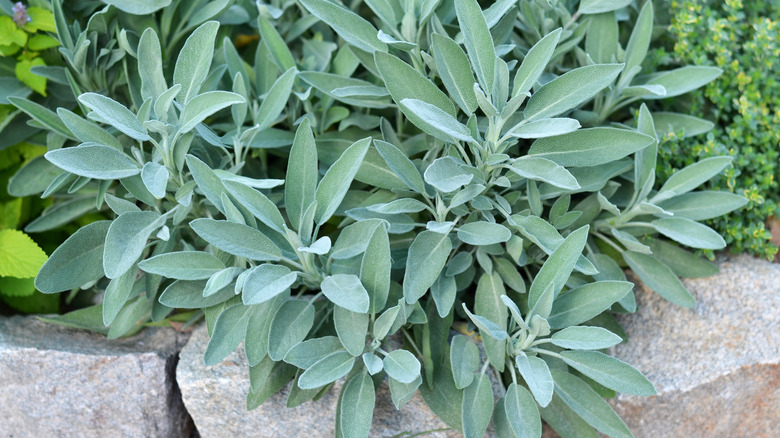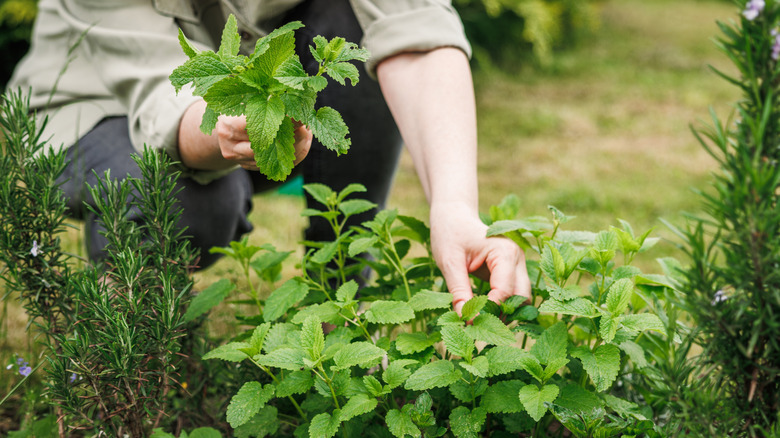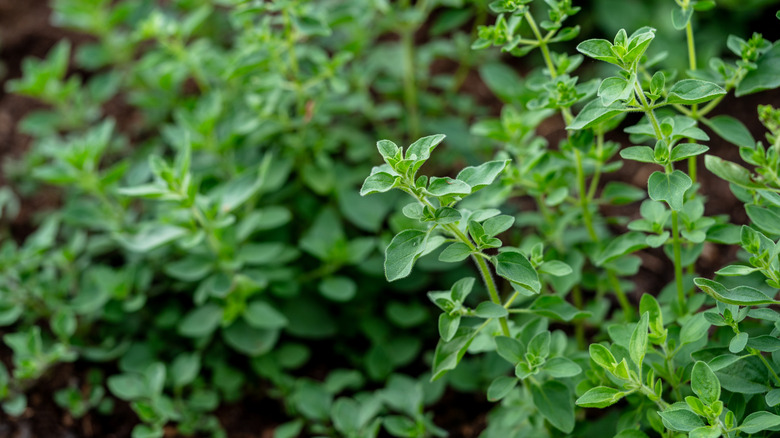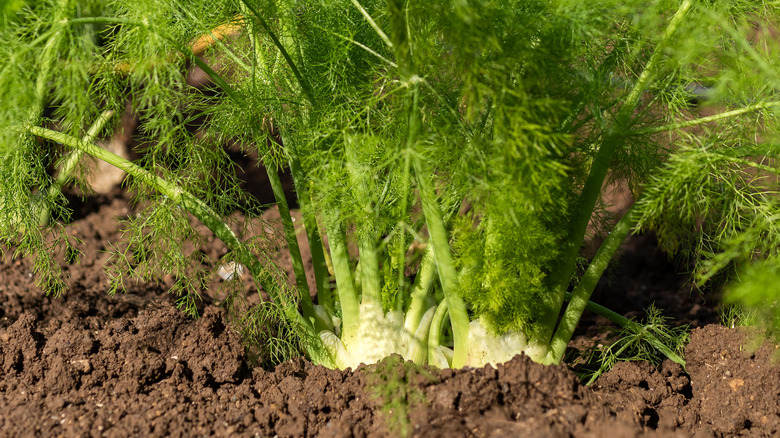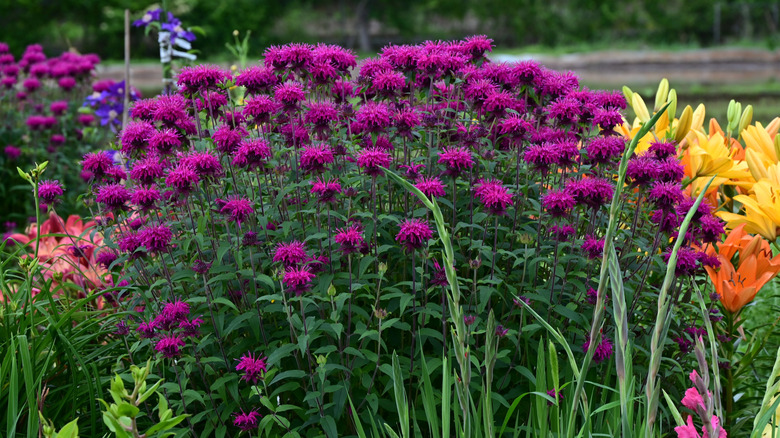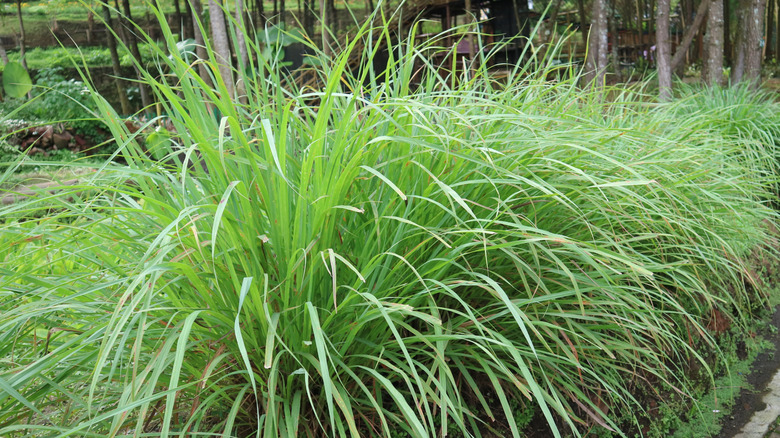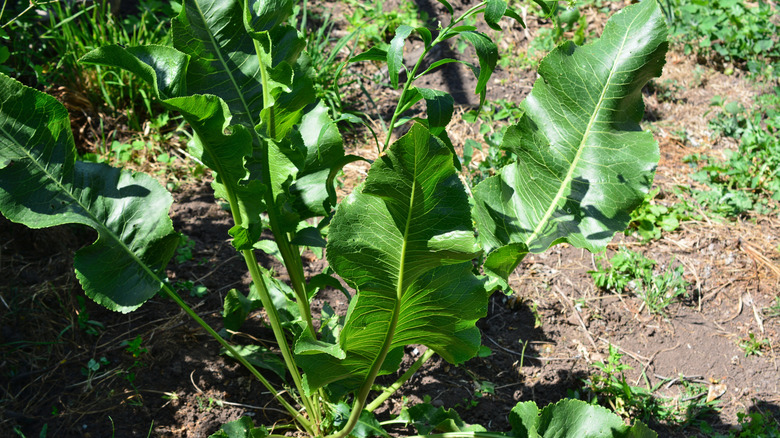12 Garden Herbs You Should Be Dividing In The Fall
Trying to grow a lush, thriving herb garden is no small task. One of the biggest mistakes gardeners make when growing herbs is assuming that their perennial herbs will continue to produce without a little attention. Over time, even the hardiest plants start to crowd themselves – roots knot together, leaves can grow sparse, and those once-vibrant clumps begin to look more tired than tasty. Left unchecked, this natural cycle can reduce flavor, limit harvests, and leave garden beds feeling overrun or unbalanced. The problem isn't that the herbs are fragile – it's that they need a refresh every few years to keep performing at their best.
That's where dividing your plants comes in. While it might seem counterintuitive to dig up and split a plant you've worked hard to grow, the process actually ensures long-term health. By lifting a crowded clump, cutting it into smaller sections, and replanting those divisions throughout your garden, you can give the roots more space to spread out and encourage new, healthy growth from each plant. You'll walk away from the process with a few extra plants from each division and a healthier overall herb garden.
Fall is the ideal season for a garden refresh, with cooler temperatures and seasonal rainfall helping herbs recover before winter dormancy. Come spring, divided herbs return with renewed vigor — offering stronger flavors, fuller foliage, and a more balanced garden overall. From fast spreaders like mint and lemon balm to reliable staples like chives, sage, and oregano, dividing is a time-tested practice that keeps your herb garden productive and thriving year after year.
Oregano
Oregano (Origanum vulgare) is a sun-loving, Mediterranean perennial often prized for its dense, leafy growth and strong presence in a garden. Left unchecked, it tends to form thick mats of woody stems that can die back in the center, leaving the plant looking less vigorous. Dividing every few years can renew growth and prevent overcrowding in your herb garden. In fall, lift the clump, cut it into smaller sections, and replant the healthiest pieces in well-drained soil. Cooler weather gives the plant time to reestablish roots, ensuring lush, leafy growth that returns balanced and strong in spring.
Chives
With their bright green stalks and purple pom-pom flowers, chives (Allium schoenoprasum) are one of the most cheerful spring-time perennials. When clumps become overcrowded, growth thins and flowers diminish, robbing them of their tidy, tufted charm. A simple fall division can help your chive plants perk back up in time for spring, and provide a denser harvest. Use a sharp spade to slice each clump into three or four smaller sections, each with strong roots and shoots. Replant with extra breathing room to maintain airflow and keep congestion at bay. It's a quick, effective way to rejuvenate chives and keep them productive each season.
Thyme
Tiny leaves, a soft fragrance, and a low profile make thyme (Thymus vulgaris) one of the most charming perennials in any herb garden. Its creeping growth habit means it often doubles as ground cover, spreading neatly between stones or along pathways. But even this resilient favorite eventually develops woody stems and patchy centers that spoil its tidy look. A fall division revives thyme by removing older sections and replanting vigorous shoots with room to spread. The cooler soil helps the plant establish itself so it can return to rapid growth once spring starts to approach.
Mint
Few herbs have a reputation like mint (Mentha) – fresh, vigorous, and undeniably pushy. Its runners often charge across garden beds, finding every nook and cranny that they don't belong in. Left alone, the plant becomes a tangled, root-bound mess. Dividing in fall is an effective way to rein in some of that energy. When dividing mint, trim away tired sections and replant only the youngest, healthiest shoots. Just be careful with these new plants, as they will quickly bounce back to spreading across your garden beds. Some gardeners even sink containers into the soil to control the spread.
Tarragon
Elegant but temperamental, tarragon (Artemisia dracunculus) isn't a long-lived perennial. After a few productive years, it often slumps — stems thin out, leaves lose color, and the plant starts to fade. Division in fall gives it a second wind. The process for dividing tarragon is similar to other herbs, but you may need to cut away at the woody or exhausted core of the plants. Keep the healthy, new growth intact when replanting for the best chance at reestablishing your tarragon collection. With this refresh, tarragon returns vigorous and leafy, ready to thrive in the garden for a few more seasons.
Sage
Sage (Salvia officinalis) is one of those herbs that commands presence in a garden, with silvery foliage and shrubby, upright growth. Even this classic perennial ages, developing woody stems and hollow centers that weaken the plant. Division can keep your collection of sage plants feeling fresh and vibrant. In fall, lift the clump and slice away the hardened base. Replant the younger shoots with strong roots in rejuvenated soil where they can settle before winter arrives. The process curbs sage's decline and restores leafy abundance, providing plenty of herbs to harvest and store for years to come.
Lemon Balm
With a citrus scent and lush green leaves, lemon balm (Melissa officinalis) brightens any corner — until it overgrows its welcome. The plant spreads freely, reseeding and crowding into a sprawling clump that overwhelms smaller neighbors. While pruning can rein in most herbs, lemon balm recovers from a cutback within a month, making it difficult to control. By dividing it in the fall, you can keep your lemon balm plants smaller and controlled. Prioritize younger, rooted shoots when dividing your plant, discarding the center in the process. Replant with enough space to spread out or keep them in pots to control their growth.
Marjoram
Marjoram (Origanum majorana) may not command attention like taller herbs, but its soft, rounded shape and fragrant leaves make it a quiet anchor in the garden. Over time, the plant loses its neat form, growing woody at the base and uneven on top. Marjoram typically slows growth in the fall and spring, making it the perfect time for a simple refresh. When dividing your marjoram plants, you'll want to ensure that each section has at least one fresh, green shoot to allow it to ease the transition back into the soil. Replant immediately and water generously.
Fennel
Fennel (Foeniculum vulgare) is prized for its ornamental grace and culinary usefulness, but its growth habits pose challenges. The plant develops a long taproot, which can make it difficult to dig and divide without damage. Still, the effort pays off. Some gardeners have had success simply cutting the root ball straight down the middle, taking extra care not to damage the taproot. Others chop the plant horizontally to provide a second harvest once it grows back in. With careful handling, the cooler temperatures allow the newer root systems to take hold before entering back into an active growth period.
Bee Balm
Known for its dazzling display of red, pink, and purple flowers, bee balm (Monarda) can be the star of any summer garden. Those blooms not only add color, but also attract bees, butterflies, and hummingbirds in droves. As the plant ages, its bloom count often dwindles, and the center of clumps can go barren of vibrant foliage. Fall division can keep flowers and pollinators coming back. When dividing bee balm, separate plants so each section has roots and shoots. Leave enough space when replanting for airflow and expansion in refreshed soil.
Lemongrass
Lemongrass (Cymbopogon citratus) has a bold, tropical presence with tall blades and citrusy fragrance that stands out. Its clumps harden fast, forming a dense tangled mess that can choke out new growth if left unchecked. In the fall, you'll want to first give your lemongrass plant a small haircut so that it maintains a manageable height. Use a sharp spade to slide through the root ball, separating sturdy sections with healthy shoots. Replant these divisions in refreshed soil, giving each plant enough room to expand again. This method quickly expands your lemongrass supply, transforming one plant into a gardenscape over a few seasons.
Horseradish
Horseradish (Armoracia rusticana) may be a root vegetable, but in the garden it is often treated as an herb for its strong flavor and vigorous growth. Underground, horseradish spreads quickly, sending out thick roots that can become tough, tangled, and difficult to manage if left unchecked. Dividing in fall is essential to keep the plant both productive and contained. Dig up the clump, cutting the crown into smaller pieces that each contain a bit of leaf and root. The cool weather will help them settle before winter arrives. With a simple refresh, horseradish remains a bold, long-lasting garden staple that thrives year after year.
